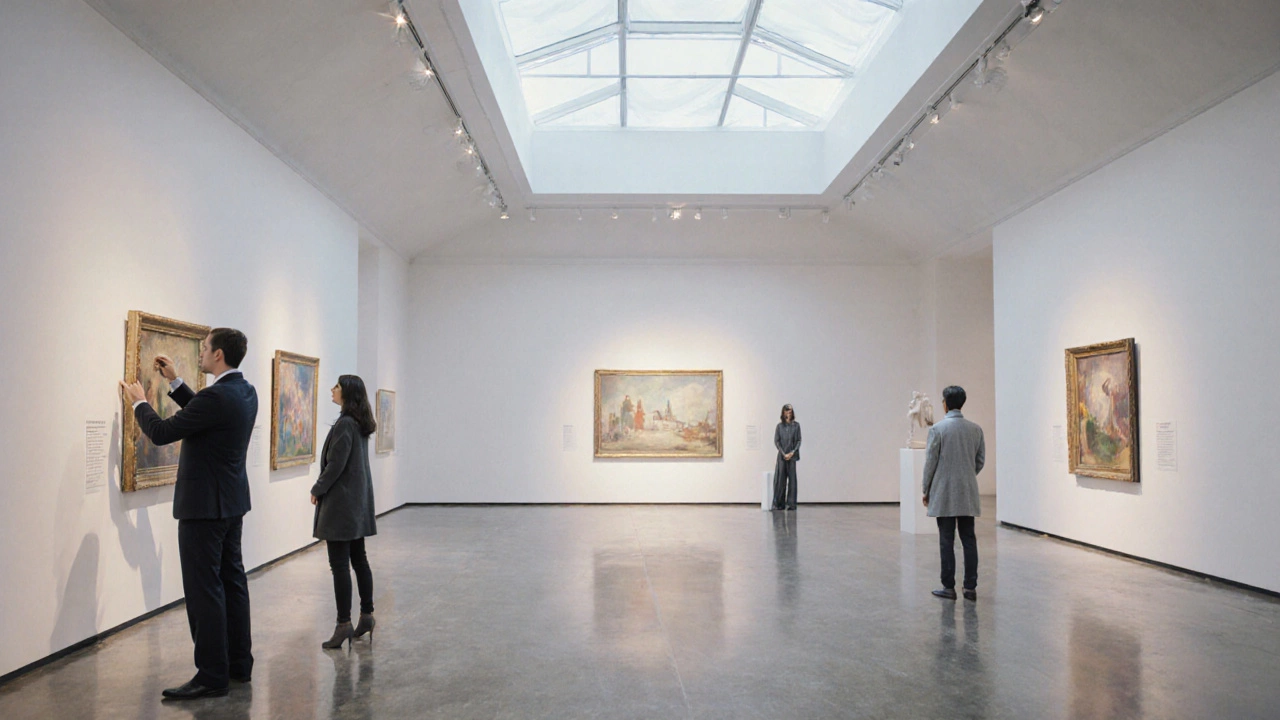Art Terminology Explained: Simple Definitions You Can Use Today
Ever felt lost when someone mentions "chiaroscuro" or "impasto"? You’re not alone. Knowing the basic vocabulary makes viewing galleries, chatting with artists, or creating your own work a lot easier. Below you’ll find the most useful terms broken down in plain English, plus quick tips on how to spot each one in real art.
Common Visual Arts Terms
Composition – The way elements are arranged in a piece. Think of it as the recipe that guides the viewer’s eye. A strong composition balances shapes, colors, and space so nothing feels cramped or empty.
Palette – The set of colors an artist chooses for a work. It can be a physical board or an imagined range. Limiting your palette to a few hues often creates more harmony.
Texture – The feel or look of a surface. Rough brushstrokes, smooth glass, or gritty sand all give texture. In a 2‑D painting, texture is suggested through technique.
Value – How light or dark a color appears. Artists use value to create depth and mood without relying on hue alone.
Chiaroscuro – The dramatic contrast between light and dark. Caravaggio mastered this to make figures pop out of shadows.
Impasto – Thick, raised paint that you can see and sometimes feel. It adds a three‑dimensional quality to a canvas.
Negative Space – The empty area around and between subjects. Good use of negative space can make a composition feel calm or tense.
Medium – The material used to create art, such as oil, acrylic, charcoal, or digital. Each medium behaves differently, affecting drying time, texture, and color vibrancy.
Scale – The size relationship between elements or the whole work and its surroundings. A tiny figure in a huge landscape can convey loneliness.
Understanding Key Concepts
Beyond individual words, a few big ideas stitch everything together. Balance is about distributing visual weight so the piece feels stable. You can achieve balance symmetrically (mirrored) or asymmetrically (different elements that still feel equal).
Contrast isn’t just light vs. dark; it includes color, texture, and shape differences. A smooth sphere next to a rough cube instantly grabs attention.
Movement refers to the path your eye follows. Repeating lines, arrows, or even the direction of brushstrokes can lead viewers through the artwork.
When you spot these concepts in a painting, ask yourself: What is the artist trying to highlight? Which terms apply? This quick mental checklist helps you decode almost any piece, whether it’s a Renaissance masterpiece or a bold street mural.
Now that you have a handy glossary, try using the words next time you talk about art. Mention the "strong composition" of a landscape, point out the "impasto" in a portrait, or note the "negative space" in an abstract work. You’ll sound more confident and, more importantly, you’ll understand what you’re looking at.
Keep this list handy, add new terms as you encounter them, and watch your art conversations become richer. Knowing the lingo is the first step toward truly appreciating the creative world around you.

1 Oct 2025
Discover the precise difference between an art exhibit and an art exhibition, with clear definitions, real‑world examples, a handy comparison table, and a FAQ to master the terminology.
Continue reading...
